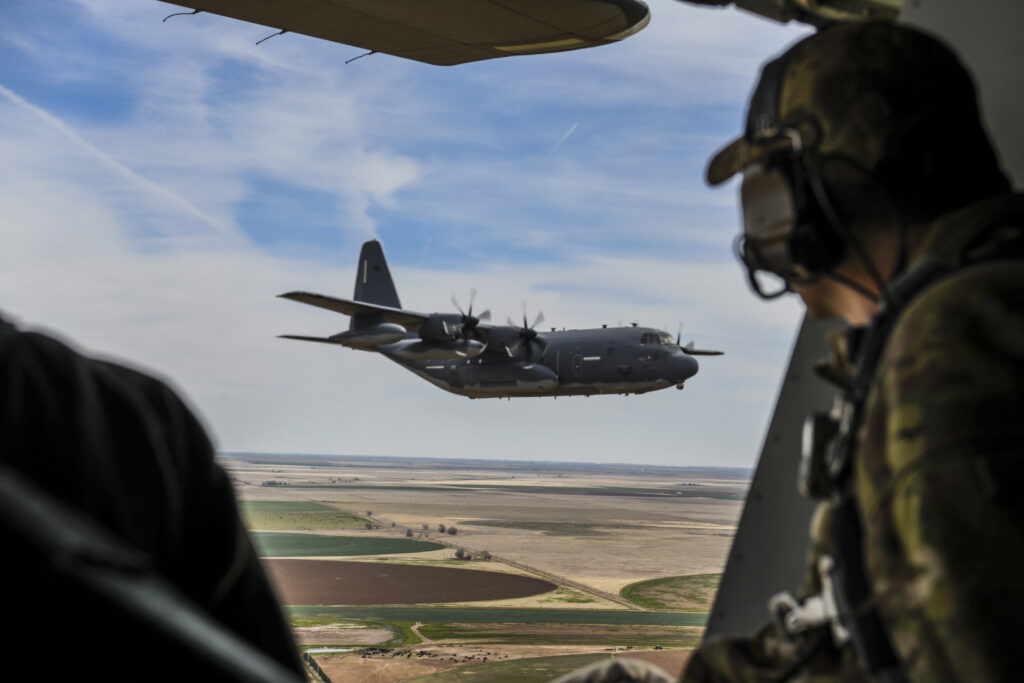
An MC-130J aircraft
WASHINGTON: Air Force Special Operations Command is pushing to refit MC-130J aircraft to be able to take off and land in the water.
The idea, which has been floating around in some fashion for decades but never made it very far past artists renderings, might finally have real momentum behind it
There’s “enough command interest” to push it forward, Col. Ken Kuebler, Program Executive Officer for Fixed Wing told reporters Wednesday evening, though he cautioned the idea is still in its early stages.
An amphibious C-130 would give special operations forces another way to insert themselves in areas where US military leaders think will be most contested in the coming years — small island chains in the Pacific where Chinese forces have built a string of small bases contesting climas by rival nations.
“It just gives us a lot of capability as we look toward a great power competition,” Kubler said.
He acknowledged that affixing flotation devices on a C-130 would present a whole host of engineering challenges, but the effort to see if it’s possible is worth it.
“There is enough of a focus on peer and near-peer as we look at emerging threats,” Kubler said. “Is it going to be cost effective? That’s why we have several lines of effort early on and there will be plenty of off-ramp [opportunities] along the way to determine if we move forward.”
The efort joins new approaches being developed by the Navy and Marine Corps to rapidly disperse their forces throughout the vast expanses of the Pacific, encapsulated in the release last month of the Corps’ Tentative Manual For Expeditionary Advanced Base Operations, which will serve as a guidepost for their efforts to build new ways for island-hopping across the Pacific.
The 180-page document is intended to be the first step in an effort to create a series of small, agile units tasked with air defense, anti-ship and submarine warfare, and seizing, holding and resupplying small temporary bases as part of an island-hopping campaign in the Pacific in which units keep on the move, providing a more difficult target for enemy missile and aircraft.




















